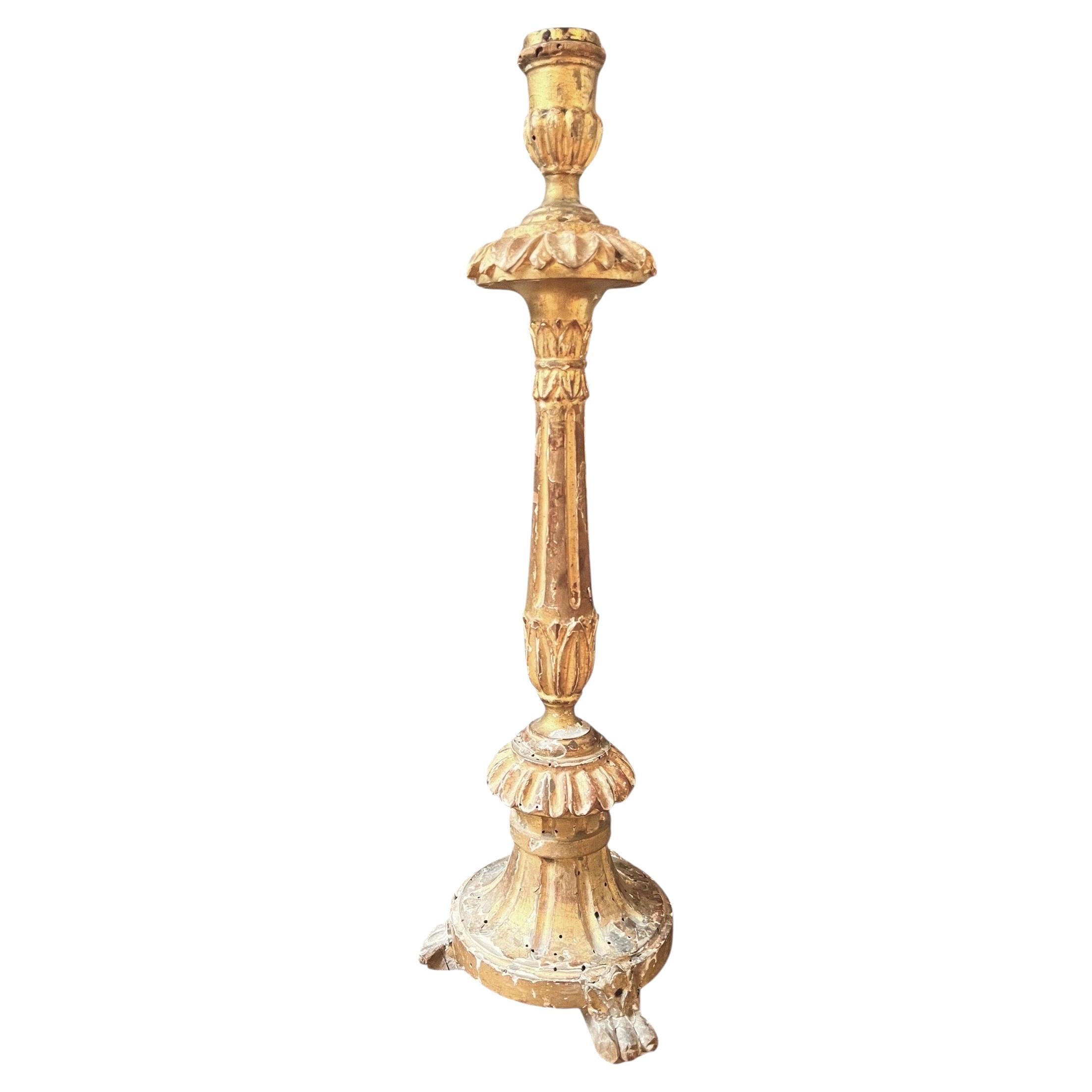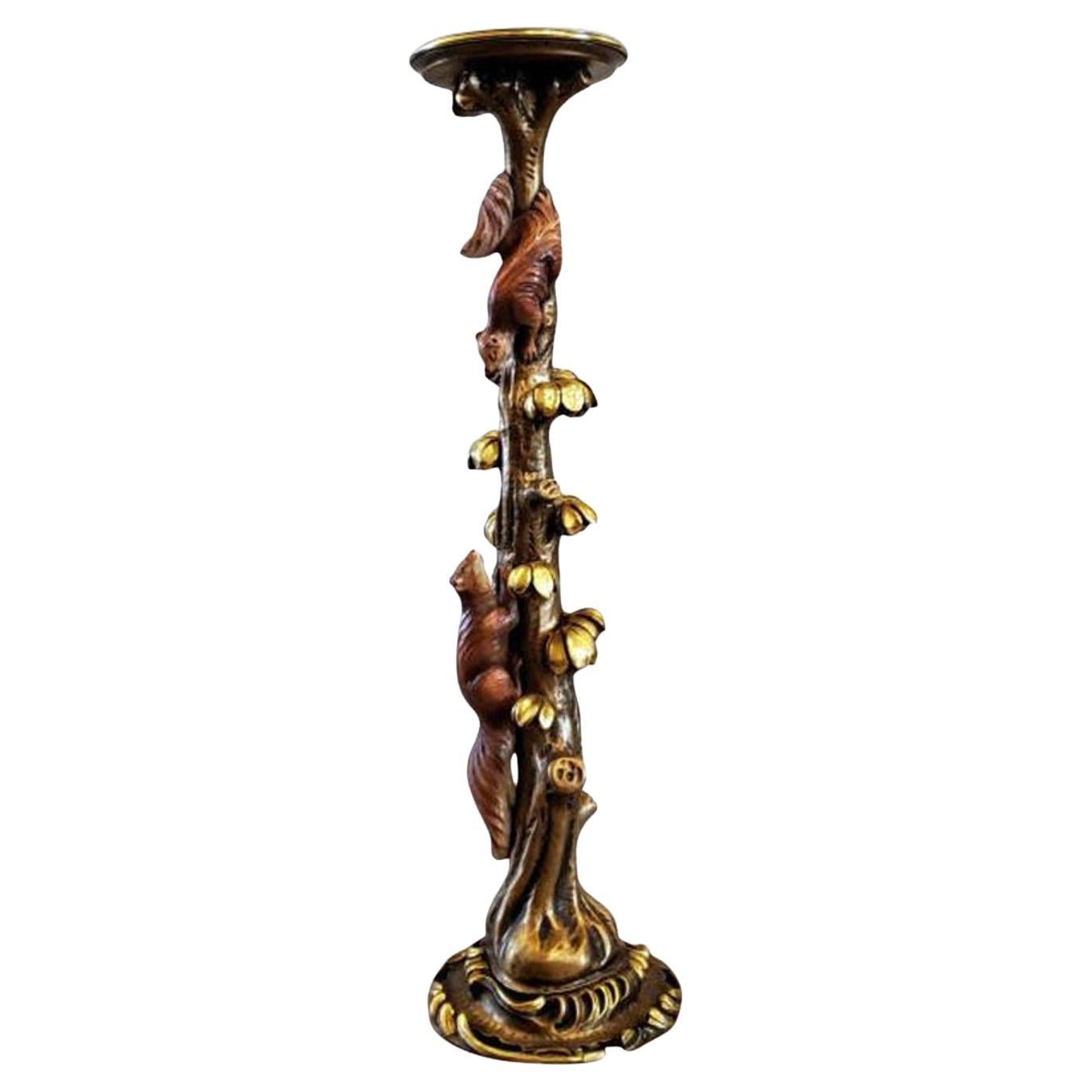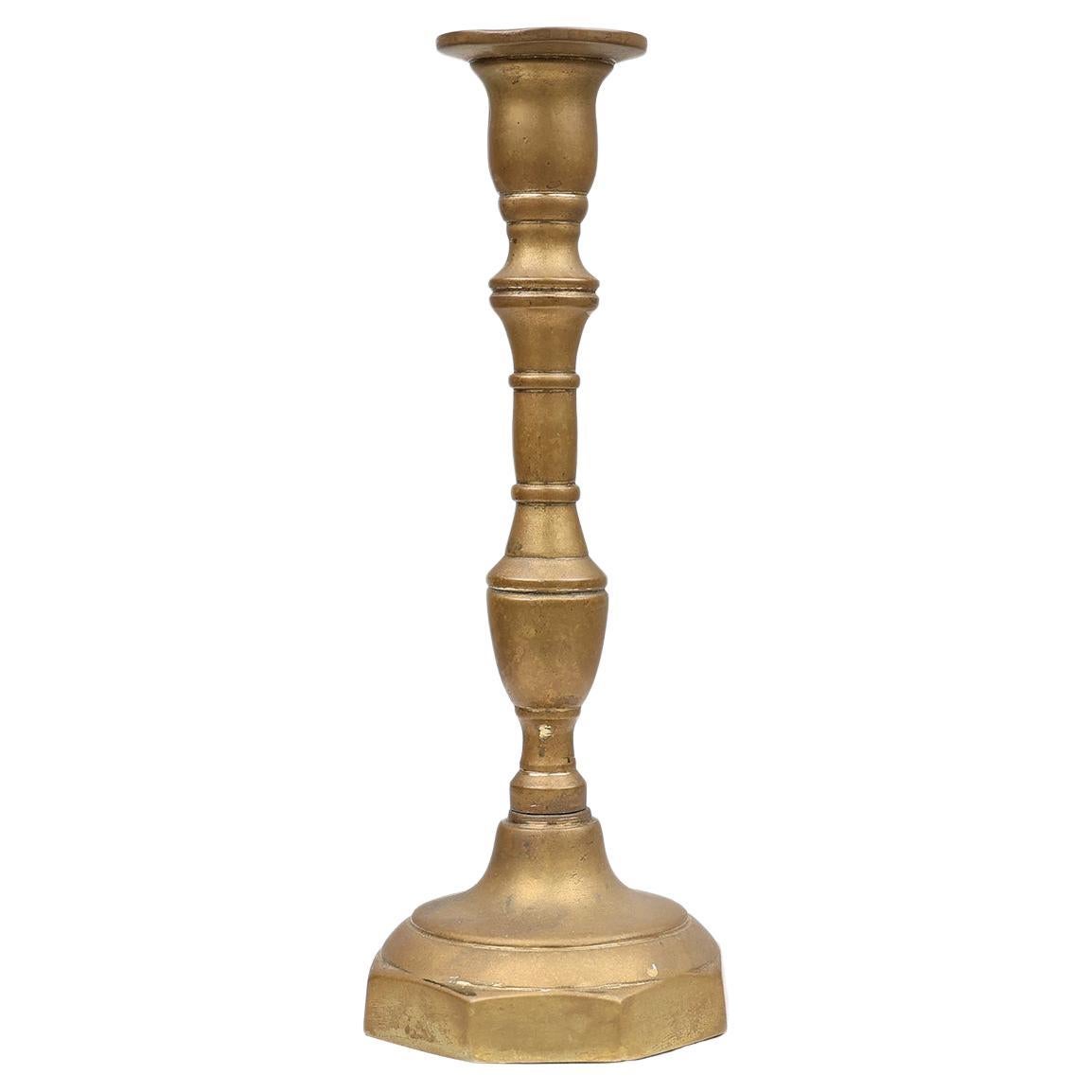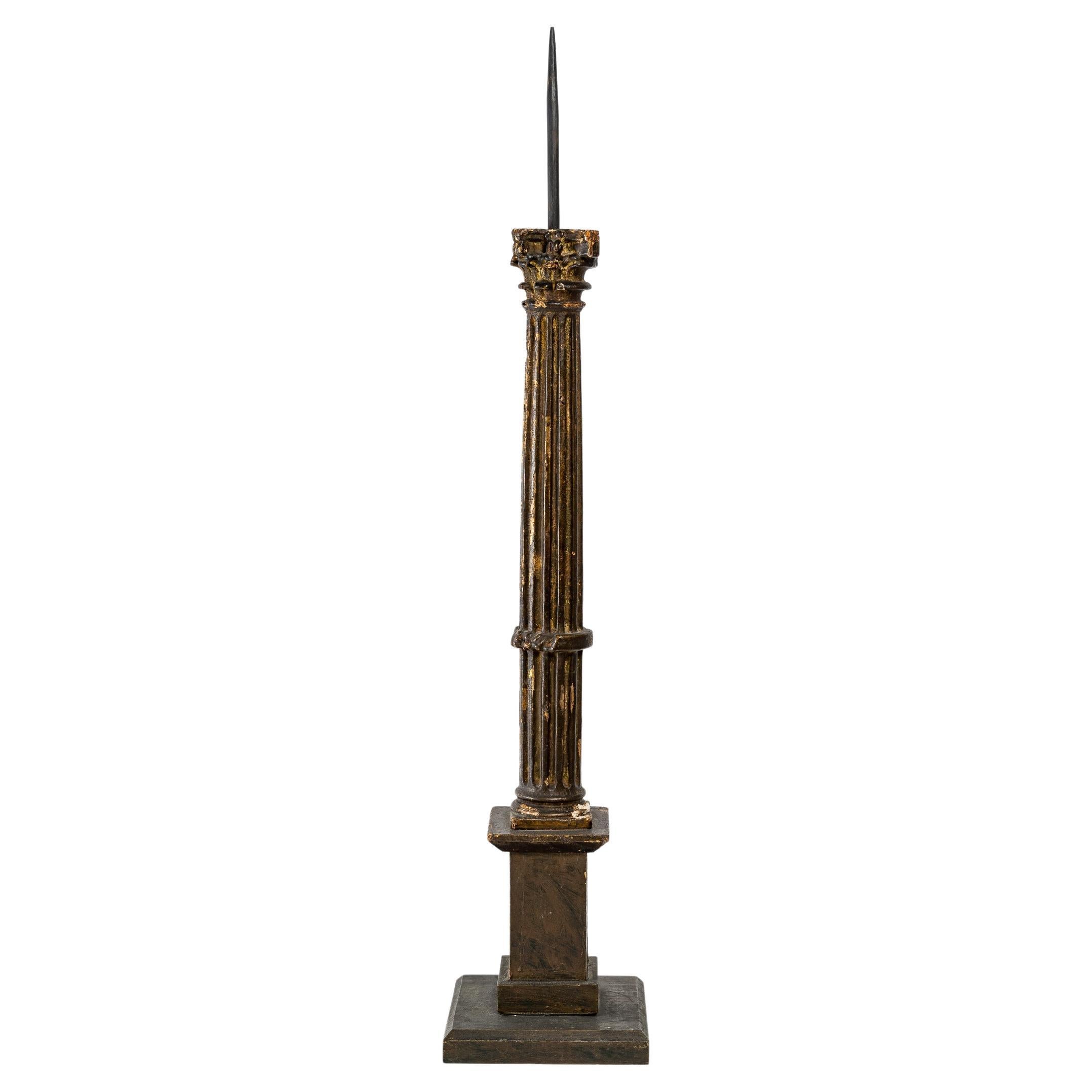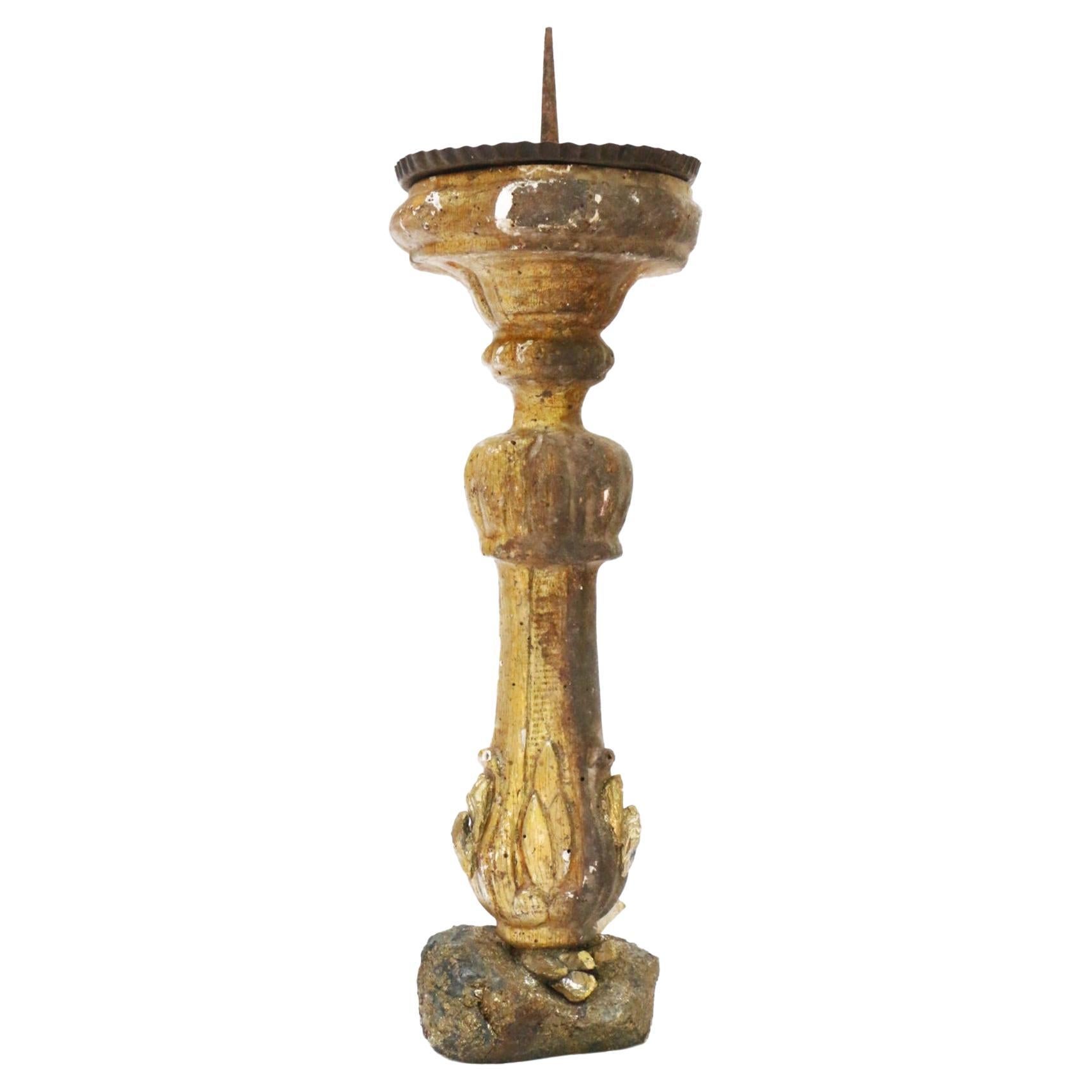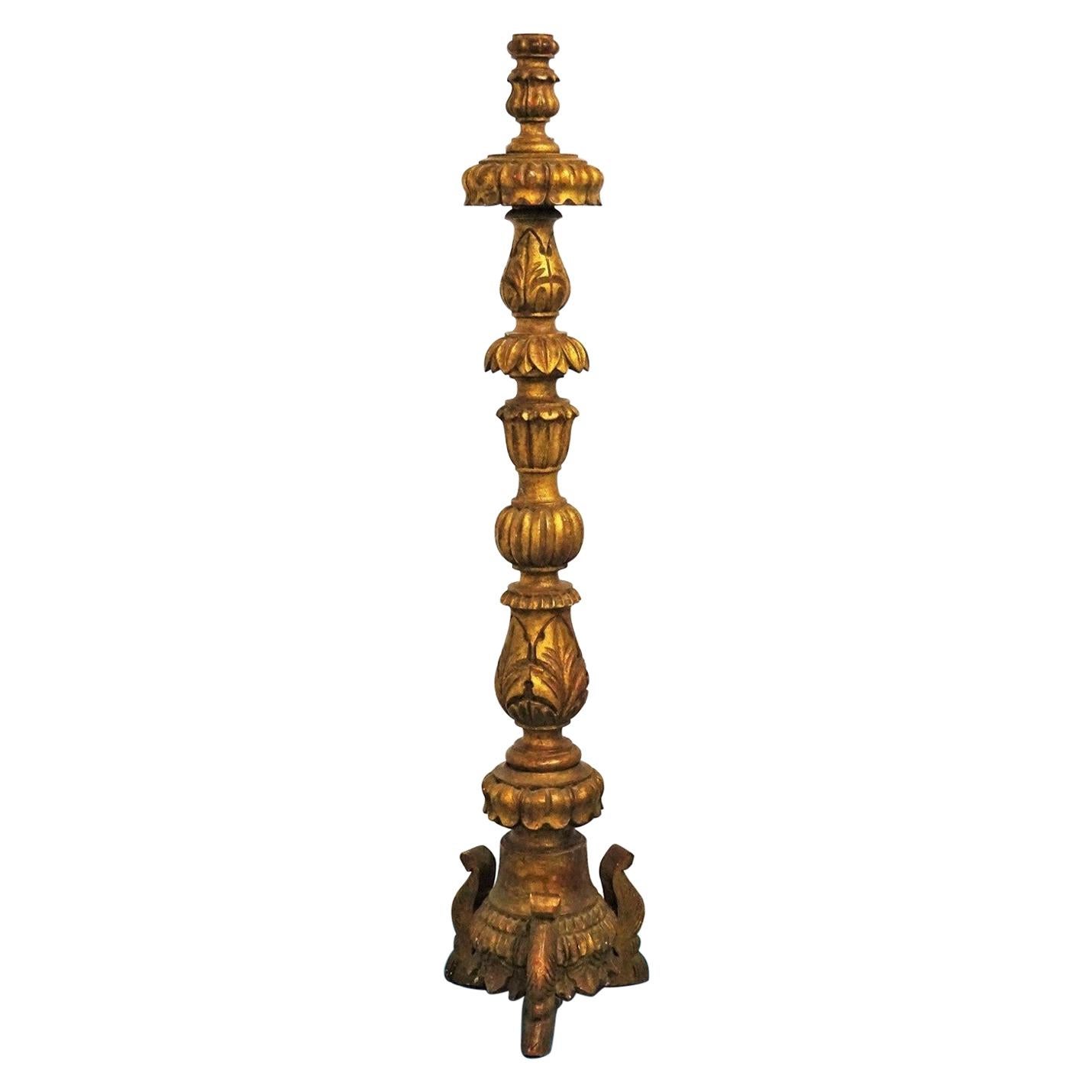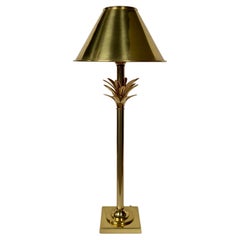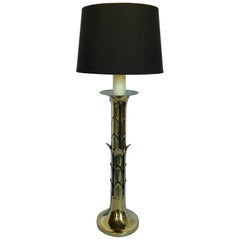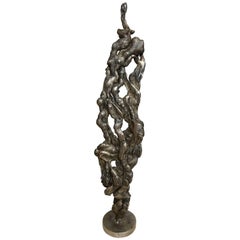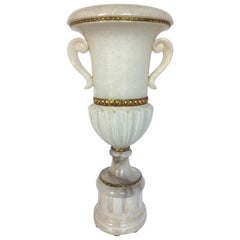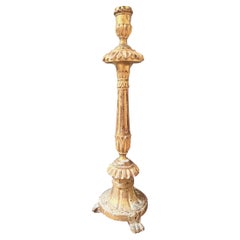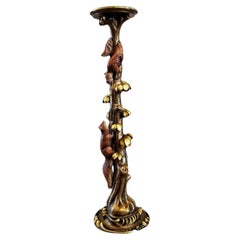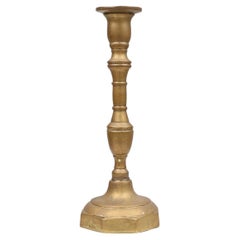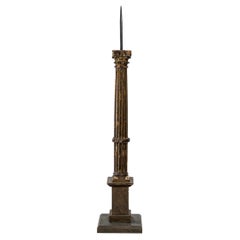Items Similar to Baroque Style Faux Bois MAC Gilt Candlestick Floor Sculpture, Mar Co.
Want more images or videos?
Request additional images or videos from the seller
1 of 12
Baroque Style Faux Bois MAC Gilt Candlestick Floor Sculpture, Mar Co.
$500
£388.09
€442.17
CA$714.55
A$778.20
CHF 410.32
MX$9,465.20
NOK 5,159.75
SEK 4,839.42
DKK 3,301.81
About the Item
Tall floor torchère sculpture by Mar Co.' and 'M.A.C. Sculpture, Inc. California. This baroque inspired sculptural floor candlestick is made of resin with a reflective gilt painted finish. This interesting piece can be displayed as a sculptural work of art or used as a floor candlestick. The top rose has an opening to hold a standard taper candle. Original label to bottom and signed on top of base.
- Creator:MAC (Designer)
- Dimensions:Height: 61 in (154.94 cm)Diameter: 10 in (25.4 cm)
- Style:Baroque (In the Style Of)
- Materials and Techniques:
- Place of Origin:
- Period:
- Date of Manufacture:2000's
- Condition:Wear consistent with age and use. Light finish wear.
- Seller Location:Lambertville, NJ
- Reference Number:1stDibs: LU1149235660182
About the Seller
5.0
Vetted Professional Seller
Every seller passes strict standards for authenticity and reliability
Established in 2012
1stDibs seller since 2014
404 sales on 1stDibs
Typical response time: 1 hour
- ShippingRetrieving quote...Shipping from: Lambertville, NJ
- Return Policy
Authenticity Guarantee
In the unlikely event there’s an issue with an item’s authenticity, contact us within 1 year for a full refund. DetailsMoney-Back Guarantee
If your item is not as described, is damaged in transit, or does not arrive, contact us within 7 days for a full refund. Details24-Hour Cancellation
You have a 24-hour grace period in which to reconsider your purchase, with no questions asked.Vetted Professional Sellers
Our world-class sellers must adhere to strict standards for service and quality, maintaining the integrity of our listings.Price-Match Guarantee
If you find that a seller listed the same item for a lower price elsewhere, we’ll match it.Trusted Global Delivery
Our best-in-class carrier network provides specialized shipping options worldwide, including custom delivery.More From This Seller
View AllHollywood Regency Tall Brass Palm Tree Candlestick Table Lamp
Located in Lambertville, NJ
Hollywood Regency style tall palm tree form brass table lamp. This sculptural candlestick lamp features a polished gold brass finish and is topped with a coordinating metal cone sha...
Category
20th Century Hollywood Regency Table Lamps
Materials
Metal, Brass
$560 Sale Price
20% Off
Hollywood Regency Style Brass Palm Tree Table Lamp
By Maison Jansen
Located in Lambertville, NJ
Mid-Century Modern Hollywood Regency style brass palm tree form candlestick table lamp. In the style of Maison Jansen.
Measures: Height 39.5 to top of harp. Lampshade not included.
Category
Vintage 1970s Mid-Century Modern Table Lamps
Materials
Brass
$560 Sale Price
20% Off
Albert Feraud Brutalist Mid-Century Modern Abstract Metal Sculpture, France
By Albert Feraud
Located in Lambertville, NJ
Mid-Century Modern steel table top abstract sculpture by internationally recognized French artist Albert Feraud, (1921-2008) Paris, France. Sculpture sign on base. Circa 1960's.
Feraud created his unique sculptures from found materials from scrap metal and sky scrappers. Albert Féraud studied at the schools of fine arts of Montpellier, Marseille and Paris in the studio of Alfred Janniot...
Category
Vintage 1960s French Mid-Century Modern Abstract Sculptures
Materials
Metal, Steel
Tall Carved Alabaster Marble and Bronze Urn Table Lamp, Italy
Located in Lambertville, NJ
Beautifully carved Italian alabaster marble handled urn table lamp, early 20th century. Classic urn form features decorative bronze fittings, sculptural curved side handles, and a fluted column plinth...
Category
Early 20th Century Italian Neoclassical Table Lamps
Materials
Alabaster, Marble, Bronze
$960 Sale Price
20% Off
Monumental Chapman Hollywood Regency Sculptural Lamps
By Chapman Manufacturing Company, Dorothy Draper, Tony Duquette
Located in Lambertville, NJ
Amazing pair of monumental tall table lamps with original blue Chapman paper labels. Features include original gilt paint with beautiful hand-carved details to the structurally sound...
Category
Vintage 1950s Hollywood Regency Table Lamps
Materials
Gesso, Wood
$1,440 Sale Price / set
42% Off
Mid-Century Modern Bamboo Style Chrome and Brass Floor Lamp, 1970s
Located in Lambertville, NJ
1970s Mid-Century Modern bamboo style chrome and brass plate floor lamp. Lamp shade not included.
Measures: Height to harp 57.25 inches.
Height to socket 48.5 inches.
Category
Vintage 1970s Mid-Century Modern Floor Lamps
Materials
Brass
$560 Sale Price
20% Off
You May Also Like
Baroque altar candlestick in gilded wood, Italy or Portugal, circa 1720–1740
Located in Beuzevillette, FR
Impressive Baroque altar candlestick finely carved in wood and gilded with gold leaf.
The piece stands on a tripod base with lion paw feet, supporting an elegant baluster stem adorne...
Category
Antique 18th Century Italian Rococo Candlesticks
Materials
Wood
Italian Mid-Century Sculptural Gilt Wood Pedestal Stand
Located in Forney, TX
We present a charming rare hand carved and painted parcel gilt wooden pedestal / stand from Italy.
Sculptural in form and dating to the mid-20th century, this incredible work fea...
Category
Mid-20th Century Italian Rococo Pedestals
Materials
Giltwood, Paint
Antique French candlestick in bronze, ca. 1890
Located in Meulebeke, BE
France / 1890 / candlesticks / bronze / Antique / Rustic
A rare candlestick in bronze, crafted in France around 1890. This candlestick features a beautifully designed sturdy base an...
Category
Antique Late 19th Century French Rustic Candlesticks
Materials
Bronze
Carved and Gilded Wood Candle Stick, 19th Century
Located in Saint-Ouen, FR
Carved and gilded wood candle stick, 19th century
Measures: H: 68 cm, W: 18 cm, D: 18 cm.
Category
Antique 19th Century French Napoleon III Candlesticks
Materials
Wood
$1,223 Sale Price
20% Off
17th Century Italian Gilt Candlestick with Chalcopyrite and Gold-Plated Quartz
By Interi
Located in Dublin, Dalkey
Sculptural 17th century Italian gilt candlestick mounted on chalcopyrite and adorned with gold-plated kyanite.
This fragment was originally part of a candlestick from a church in It...
Category
Antique 17th Century Italian Baroque Mounted Objects
Materials
Rock Crystal, Quartz, Gold Plate, Gold Leaf, Metal
$937 Sale Price
25% Off
Early 18th Century Portuguese Carved Giltwood Church Torchère, Candleholder
Located in Frankfurt am Main, DE
Tall early 18th century Portuguese gilt oak church torchère with deep foliate carvings on a tripod base.
This torchère can easily be converted into a ...
Category
Antique Early 18th Century Portuguese Baroque Religious Items
Materials
Giltwood
More Ways To Browse
Mac Sculpture
Resin Floor Sculpture
Future Nostalgia
Jere Cattails
Klaus Ihlenfeld
Large Clay Bathtub By Studio Loho
Lucite Hourglass
Marble Sculpture Pyramid
Murano Glass Swirl Sculpture
Mussolini Head
Norma Flanagan
Norman Mercer Lucite
Organic Sculpture Wire
Puerto Rico Sculpture
Shona Stone Sculpture Zimbabwe
Signed Murphy
Soldering Iron Vintage
Space Box Meteorite
